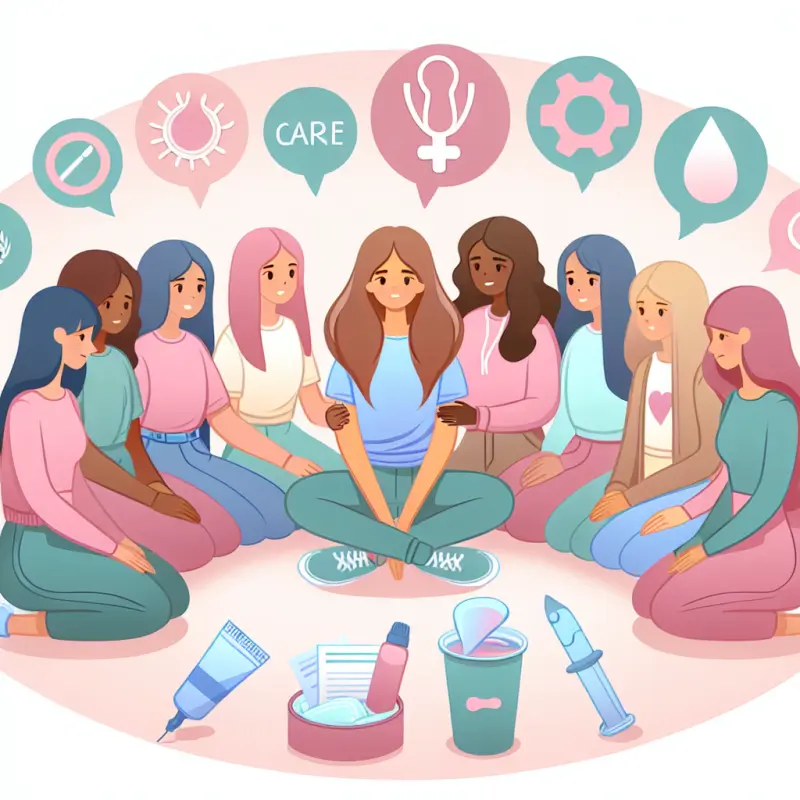Supporting Adolescent Girls with Menstrual Disorders

Supporting Adolescent Girls with Menstrual Disorders
Introduction
Menstrual disorders are a common concern among adolescent girls, yet they often remain under-discussed and inadequately addressed. These disorders can range from minor inconveniences to debilitating conditions, affecting not only physical health but also emotional and social well-being. The onset of menstruation marks a significant transition in a girl's life, yet it can be fraught with challenges if accompanied by disorders such as dysmenorrhea, menorrhagia, or amenorrhea. This article aims to shed light on the various menstrual disorders affecting adolescent girls and provide a comprehensive guide on how to support them effectively.
Understanding Menstrual Disorders
What are Menstrual Disorders?
Menstrual disorders refer to a range of issues related to the menstrual cycle, including pain, irregular periods, and excessive bleeding. These disorders can disrupt daily life, leading to school absences, social withdrawal, and emotional distress.
Common Menstrual Disorders in Adolescents
-
Dysmenorrhea: Painful menstruation that can be classified into primary (without an identifiable cause) or secondary (due to an underlying condition like endometriosis).
-
Menorrhagia: Excessive menstrual bleeding that can interfere with daily activities and lead to anemia if left untreated.
-
Amenorrhea: The absence of menstruation. Primary amenorrhea refers to no menstruation by age 15, while secondary amenorrhea is the absence of periods in someone who previously had them.
-
Oligomenorrhea: Infrequent menstrual periods, often occurring more than 35 days apart.
Causes of Menstrual Disorders
- Hormonal Imbalances: Fluctuations in hormones such as estrogen and progesterone can lead to irregular or painful periods.
- Genetic Factors: Family history can play a role in the prevalence of certain menstrual disorders.
- Lifestyle Factors: Stress, diet, and physical activity levels can impact menstrual health.
- Underlying Health Conditions: Conditions like polycystic ovary syndrome (PCOS) and thyroid disorders can contribute to menstrual irregularities.
Impact of Menstrual Disorders on Adolescent Girls
Physical Impact
- Pain and discomfort can lead to decreased participation in physical activities and sports.
- Severe bleeding can cause fatigue, dizziness, and anemia.
Emotional and Psychological Impact
- Anxiety and depression can arise from the stress and embarrassment of dealing with menstrual disorders.
- Fear of leakage or accidents during heavy periods can lead to social withdrawal.
Academic and Social Impact
- Increased absenteeism from school due to pain or heavy bleeding.
- Avoidance of social activities and extracurricular involvement due to fear of embarrassment or discomfort.
Effective Support Strategies
Medical and Professional Support
-
Regular Medical Check-ups: Encourage regular visits to a healthcare provider to monitor menstrual health and address concerns promptly.
-
Pain Management:
- Over-the-counter pain relief such as ibuprofen or naproxen.
- Heating pads and hot water bottles to alleviate cramps.
-
Hormonal Treatments:
- Birth control pills or hormonal IUDs to regulate periods and reduce symptoms.
- Consultation with a gynecologist or endocrinologist for tailored hormonal therapies.
-
Nutritional Support:
- Iron supplements for those experiencing heavy bleeding to prevent anemia.
- A balanced diet rich in omega-3 fatty acids, magnesium, and vitamin B6 to help reduce symptoms.
Educational and Emotional Support
-
Education and Awareness:
- Workshops and seminars in schools to educate girls about menstrual health.
- Creating a supportive environment where girls feel comfortable discussing their concerns.
-
Counseling and Therapy:
- Access to mental health professionals for those experiencing anxiety or depression related to menstrual disorders.
- Support groups where girls can share experiences and coping strategies.
-
Peer Support:
- Encouraging open conversations among peers to normalize discussions about menstruation.
- Peer mentoring programs where older students can guide and support younger girls.
Practical and Community Support
-
Access to Sanitary Products:
- Ensuring availability of affordable sanitary products in schools and community centers.
- Initiatives to distribute free or subsidized products to those in need.
-
School Accommodations:
- Flexible attendance policies for those affected by severe symptoms.
- Access to rest areas and bathroom facilities equipped with menstrual supplies.
-
Community Engagement:
- Community workshops to educate parents and guardians about menstrual health.
- Collaboration with local health organizations to provide resources and support.
Conclusion
Menstrual disorders can significantly impact the lives of adolescent girls, affecting their physical health, emotional well-being, and social interactions. By understanding the nature and effects of these disorders, we can better support young girls in managing their symptoms and maintaining a healthy lifestyle. It is crucial to foster an environment of openness and support, where girls feel comfortable discussing their concerns and seeking help. With the right medical, educational, and community resources, we can empower adolescent girls to navigate their menstrual health with confidence and ease.
By implementing these strategies and promoting awareness, we can break the stigma surrounding menstrual disorders and ensure that every girl has the opportunity to thrive, irrespective of her menstrual health challenges.